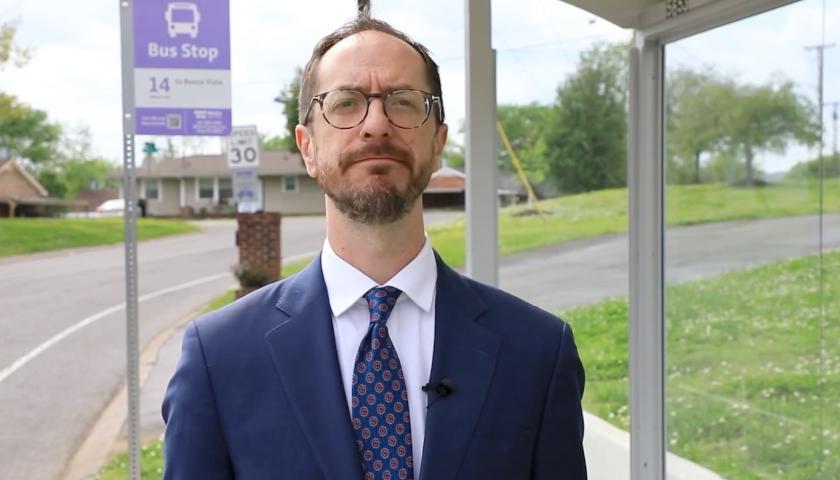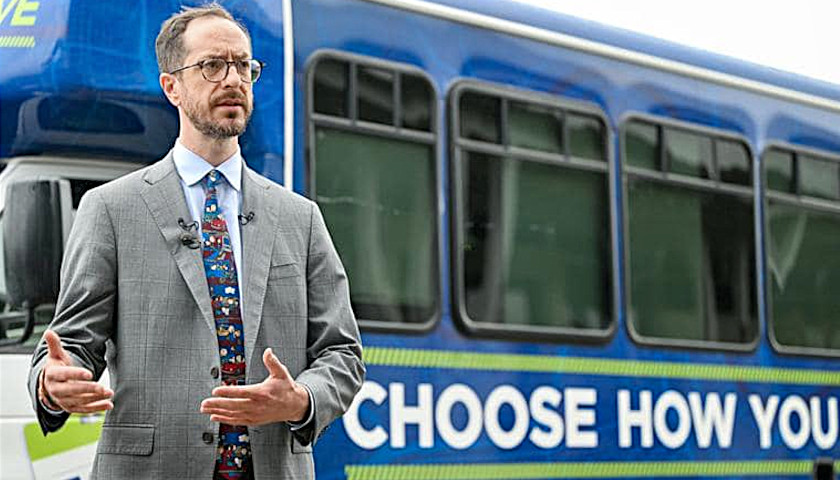Live from Music Row Wednesday morning on The Tennessee Star Report with Michael Patrick Leahy – broadcast on Nashville’s Talk Radio 98.3 and 1510 WLAC weekdays from 5:00 a.m. to 8:00 a.m. – host Leahy welcomed The Beacon Center’s Jason Edmonds to the newsmakers line to discuss the mechanics of a student-based budgeting program in the state of Tennessee.
Leahy: We’re joined on the line right now by our good friend Jason Edmonds at The Beacon Center. A beacon of liberty and clear thought here in Tennessee. Jason, welcome to The Tennessee Star Report.
Edmonds: Thank you for having me.
Leahy: Well, it’s a new year. Now, remember, unlike Joe Biden, we know that this is 2022, not 2020. I don’t know if you saw that in his clip last night? Biden said 2020 will be a good year. (Laughter) Wake up, Mr. Biden. Anyways, what is the agenda for The Beacon Center in 2022?
Edmonds: Yes, we have a handful of things. And we’ve definitely released a lot of research in the last couple of months that we hope the General Assembly will definitely look at. And the biggest one is probably the student-based budgeting that the governor has talked about.
Leahy: So student-based budgeting, the governor’s talked about it kind of explain what this idea is. I get the feeling that it’s a great concept, but the devil is in the details. Tell us about it.
Edmonds: Yes. Tennessee, as it stands right now, the funding formula for education is the most complex in the nation.
Leahy: Let’s just stop. The funding formula now just to be clear on this. Typically funding for public schools. And I guess there are 95 counties in Tennessee, but there’s about 140 what they call them local education agencies, LEAs that run independent, that run school districts. Is that right Do I have the numbers, right?
Edmonds: Yes. There can be county school systems, city school systems and special school districts.
Leahy: Now, the funding for those typically 40 percent come from local taxes, 50 percent comes from state taxes and 10 percent comes from the feds. When you talk about this funding formula, you’re talking about that 50 percent or so that comes from the state. Is that right?
Edmonds: That’s part of it. And it really comes down to where that funding is actually going to where it is. At the moment is it goes to fund certain levels of things. 30 students would equal one teacher, for example. Where a student-based budgeting system would be, each student gets the amount of money that suits them and that actually meets their needs. So instead of just trying to get a whole group of people, a group of students and say, okay, they get X amount of funds. Student-based budgeting really goes down to the individual students and funds them more fairly and provides more flexibility for the school district to actually use those funds to meet that student’s needs. And it really provides a whole lot more transparency, both the parents and the public of where the funds are actually going.
Leahy: You said that the Tennessee formula for how much the state sends to each of these 140 local education agencies that it’s a complicated formula right?
Edmonds: Absolutely.
Leahy: And if you tried to explain it to me, we would still be here 24 hours from now, right?
Edmonds: I can try and do it very quickly. I definitely won’t do it justice. But as it stands right now, there are about 46 different components for one side of how they try and fund things. And then where they get the local dollars. There are two separate indices that use very complex mathematical equations to try and find out how much a local district should pay as well. And that is just where most people get lost. And that is definitely the most difficult part to try and explain and where most people don’t understand how education funding works in Tennessee because it was just so complex.
Leahy: Are you talking about, like, the local county version of sales tax, the local county property taxes? Is that the source of it?
Edmonds: Yes. It would come down from local sales tax. And it’s just the indices that the state kind of comes down to what they call the fiscal capacity. How much a local district can afford to pay for its schools. So there are some districts where the state doesn’t pay exactly 40 percent. They can pay a whole lot less, and the local will pay a whole lot more just because the local can afford it.
Leahy: I’m guessing for example a poor rural county the state might pay, I don’t know, 60, 70 percent of it. But in Williamson County, it might pay 30 percent of it. Is that the general idea?
Edmonds: It can go up to 90 percent in some counties where the state will cover 90 percent and the local doesn’t pay as much.
Leahy: So what are the changes? What are the changes here?
Edmonds: What we’d really like to see is really I can’t speak on dollar amounts. The state, I guess it’s still going through some of these discussions here, but really, to have just a set number of dollars that would go to each student and then weights of additional dollars for those students that do need additional help, such as English language learners or special education things like that. And it’s just using Tennessee tax dollars to better serve the students, get better outcomes to provide that transparency. And really, to fund the students more carefully.
Leahy: Is it likely there will be a change in this funding formula?
Edmonds: It seems to be that the governor is very excited and wants to move forward with this. I can’t say that something automatically will happen, but we’re definitely hopeful that something will.
Leahy: But it sounds to me like there’s a possibility that this could turn out to be not exactly what people had hoped for in the sense that if you change the formula to follow the student, right? That’s the idea. Follow the student. But you just said something. Does that mean that there’s more money going to an English language learner than there is to a non-English language learner?
Edmonds: They would get additional weighted funding, yes. But that wouldn’t mean that automatically there is more funding just going to the system. We already have more funding going to public education every single year, and it doesn’t seem to be improving all that much for the outcomes. So what this does is it actually provides that transparency model to say, okay, this is exactly where the funds are going. And it’s actually meeting the needs of the students.
Leahy: Okay, so will we be able to understand what the final bill is that comes up?
Edmonds: When it does come up, if it does come up, it will be much easier than the formula that we do have now. Depending on what it is, I really can’t say what it’ll look like at the moment. But pretty much anything in the student-based budgeting direction is definitely a good step for Tennessee to take because it will clear up a lot of education funding.
Leahy: So is the governor going to propose a specific bill in his annual State of the State Address?
Edmonds: That is something we can look forward to. But I couldn’t say specifically that. Yes, he has that on there at the moment. I just don’t know.
Leahy: Because sometimes in his State of the State Address, he will say, I want to change the funding of state education. So it’s a student-based one statement like that. But the details end up being worked out at the legislative level. And since the devil is in the details, I’m just wondering, is it possible that these changes may be made but not end up being positive? That’s my question to you.
Am I wrong in that? Tell me your thoughts.
Edmonds: Well, it definitely will be a legislative change. But as we’ve seen already, there has been a listening tour going across the state. There are multiple committees and subcommittees that the governor has convened to look at student-based budgeting. So he definitely has a direction that he wants to go.
Leahy: So here’s my devil’s advocate on this. Yes, we have tracked this. We’ve written about this. There have been a lot of listening sessions where the Commissioner of Education Penny Schwinn has gone out and said, what do you think, people? Well, there have been about eight of these. We’ve been to in person, about four or five of them. And every single one of them most of the people testifying or commenting are teachers. And they have one continuous theme. We want more money. To me, that’s not such a hot thing. Do we think it’s going to be just more money, or will it be a fundamental reform?
Edmonds: We’ve seen more and more money going to the education system, and it just really hasn’t been helping as much as it should. So we believe that student-based budgeting will actually allow some more transparency and allow these dollars to fund the students. Hopefully, we’ll improve that.
Leahy: Keep us posted as this develops, if you would, Jason. Thanks so much for joining us today.
– – –
Tune in weekdays from 5:00 – 8:00 a.m. to The Tennessee Star Report with Michael Patrick Leahy on Talk Radio 98.3 FM WLAC 1510. Listen online at iHeart Radio.






I am totally opposed to providing extra funds for specific privileged classes of students. That is a slap in the face of those who do not qualify. Here we are again in the equity vs equality discussion. Like was said at the start of this article, the devil is in the details and there are a lot of details.